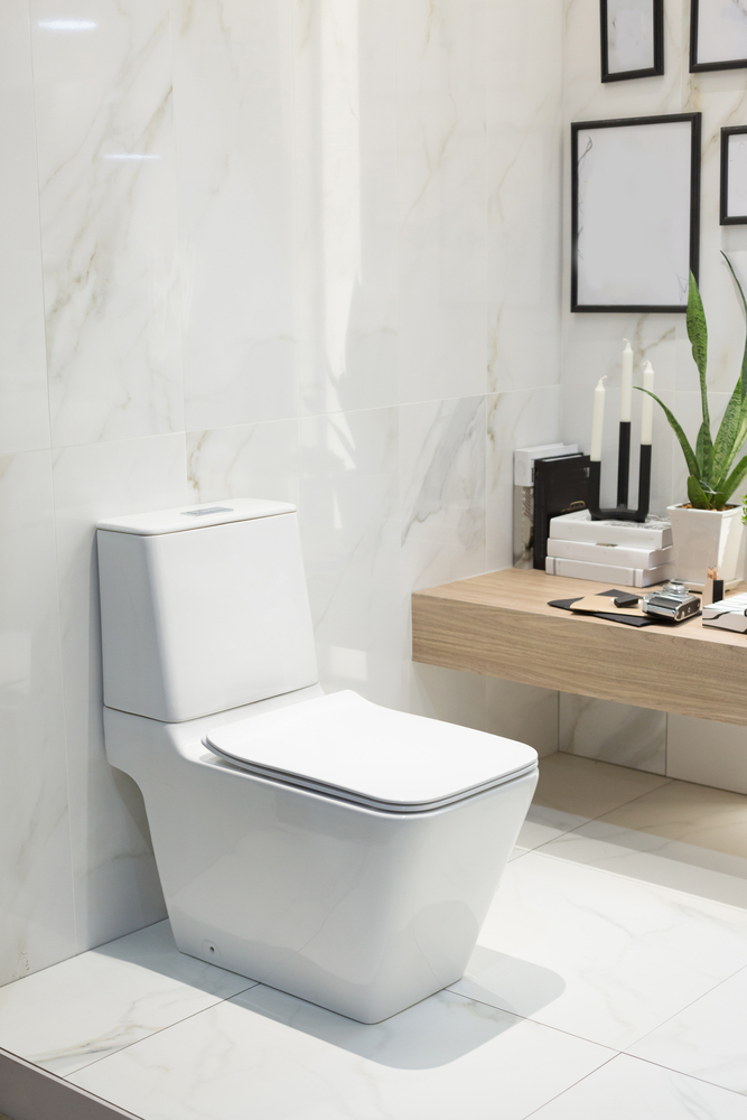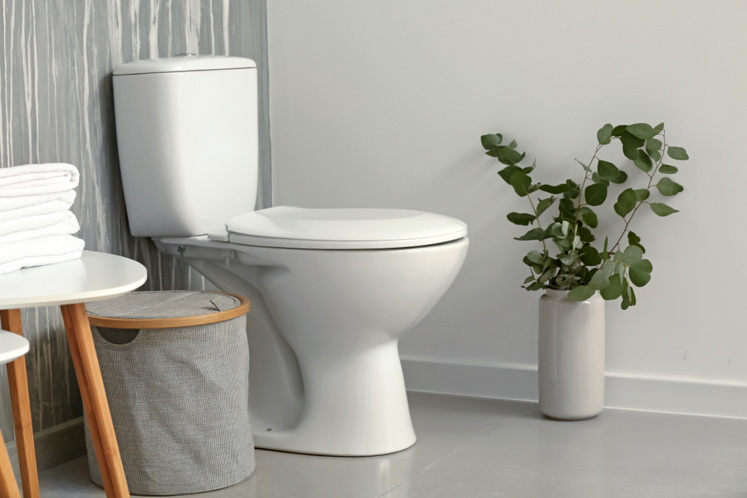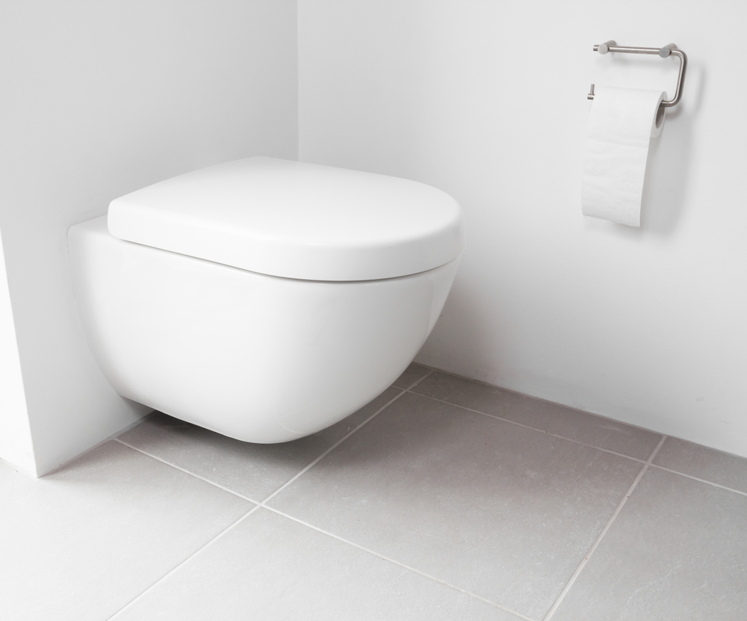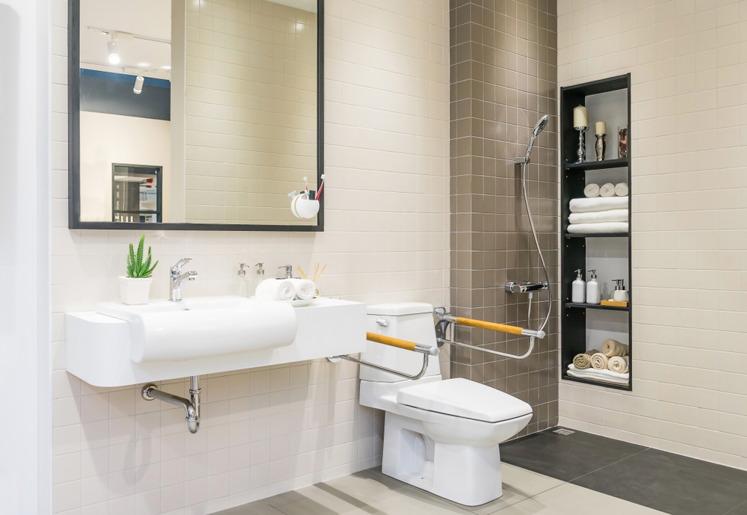If you don’t know your wall hung toilets from your close coupled toilets, you’ve come to the right place. This simple guide to the different types of toilet available in the UK will tell you everything you need to know about toilet types and systems when it comes to buying.
There are so many different designs of toilet to suit bathrooms both big and small, but this can make choosing the right toilet difficult. But what types of toilet are there?
The different toilet types
There are a range of different toilet designs on the market in the UK, each suiting various bathroom styles and sizes. To narrow things down and make things easier, we have broken it down into three main types of toilet. They are as follows:
– Close coupled toilets
– Back to wall toilets
– Wall hung toilets
Read on to find out all information about these different types of toilet.
Close coupled toilets

Photo credit: Rachel Moon / Shutterstock
Close coupled toilets come with a floor standing toilet unit and a visible cistern behind the toilet seat. This type of toilet is called “close coupled” because the cistern and bowl are closely coupled together. This toilet type is the most traditional style of toilet and is found in most UK bathrooms thanks to the wide range of shapes and sizes available, as well as its affordability.
With this type of toilet, flush mechanisms in the cistern vary, but typically has a dual-flush button on the top, or a lever handle. Some types use a traditional handle to the modern chrome button, and some may even provide options to adjust the flow of water, to provide water saving options and reduce bills.
Close coupled toilets are also available in a “fully shrouded” design, whereby the toilet sits against the wall. This not only creates a sleek and modern appearance, but also makes cleaning significantly easier by eliminating any areas for dirt or dust to congregate.
Typically costs: £60
Advantages:
- Affordable
- Easy to install
- No external or hidden plumbing required
- Fits all bathroom suites
- Wide variety of styles to choose from
Back to wall toilets

Photo credit: Aquarius Studio / Shutterstock
Back to wall toilets are similar to close coupled toilets, but they are more modern in style, thus creating a modern and minimalist look. In this toilet design, the cistern is concealed within a partition wall or furniture unit. As a result, this type of toilet is perfect for those who prefer a contemporary look, or even for bathrooms where space is at a premium (or an ensuite), as it can act as a great space-saving option.
Back to wall toilets offer the same contemporary look as a wall hung toilet, but without the additional costs required in mounting the toilet to the wall. The lack of a visible cistern also helps to create a clutter free space.
However, if you are thinking about buying a back to wall toilet for your bathroom suite, it is important to check to see if the hidden cistern is included when buying the toilet, as on some occasions you may need to buy it separately depending on the brand. This is why it is advisable to purchase your back to wall toilet with a unit included where possible.
Typically costs: £48
Advantages:
- Provides a modern and fitted look
- Uses minimal floor space
Wall hung toilets

Photo credit: Nielskliim / Shutterstock
As the name suggests, wall hung toilets are hung from the wall. This type of toilet floats above the floor with no cistern visible to the eye, which helps to make your bathroom appear more spacious. This creates a sleek and contemporary look, perfect for bathrooms with clean and simple lines that make great use of space.
Wall hung toilets need to be supported by a strong wall in order to hold the toilet’s concealed cistern and pipes. As long as it is strong, reinforced and supported properly, this can be fitted onto any wall – even a stud wall. Always ask a professional for advice with this, as you may end up making more work for yourself if it goes wrong. If the toilet and mounting frames are installed correctly, there is no reason for you to worry about the toilet falling off the wall when in use – especially as most mounting frames are able to support around 200kg in weight.
Wall hung toilets are not only designed to look sleek, but also they are built with functionality in mind too. This includes features such as soft-closing toilet seats, and toilets that are constructed from the very best, high quality materials. For this reason, this type of toilet is much pricier than the other two types of toilet, at around £175.
Typically costs: £175
Advantages:
- Maximises floor space
- Contemporary look
- Perfect for smaller bathrooms
Styles of toilets
In addition to the three main types of toilet, there are a few more types of design within those categories that you can use to differentiate toilets.
Contemporary toilets
Clean, precise lines and simple shapes are the hallmarks of a contemporary toilet. Designed with a nod to the latest trends in interior design, most contemporary toilets feature modern innovations, such as push button, dual water-saving flushes.
Contemporary toilets often come with a “fully shrouded” design, which means they sit flush to the wall, with no plumbing on display. This provides a cleaner, more sophisticated appearance and makes cleaning easier, as there are no awkward nooks and crannies.
Some even come with the very latest rimless technology for a more hygienic toilet. The rimless design helps reduce the build-up of germs and bacteria and makes it easier to clean.
Traditional toilets
Traditional toilets usually feature classic detailing, including bevelled edges and ceramic handle flushes. Usually supplied with a wooden seat for a more authentic look and feel, they fit seamlessly with vintage décor.
There are 2 types of traditional toilet which we haven’t mentioned previously: The high level toilet and the low level toilet.
- High level toilets
High level toilets are what most people think of when they imagination a “traditional” bathroom interior. This style of toilet features a cistern mounted high up on a wall, and the water pressure for the flush was created by water falling down the flush pipe which connects to the pan, through a chain pull flush.
Although these aren’t ideal for smaller bathrooms, ensuites or rooms with low ceilings, they are a great statement piece for anyone looking to create a traditional, elegant bathroom.
- Low level toilets
Much like high level toilets, low level toilets are ideal if you’re looking to achieve an authentic period-style bathroom interior, but without the complexities of a long flush pipe and mounting a high cistern. Unlike high level toilets, the flush pipe is only short, so the cistern can sit comfortably in a small space.

Photo credit: NavinTar / Shutterstock
Comfort height toilets
Comfort height toilets often sit around 4/5cm taller than a regular toilet because they are designed to make it more comfortable. Even though the extra height may not seem like a big difference to the average Joe, for those that are slightly taller, elderly or have mobility issues, it makes getting up and down from the toilet significantly easier.
Find the perfect choice for your bathroom with the incredible range of toilets available at Showerstoyou.co.uk.
Feature image credit: ImageFlow / Shutterstock